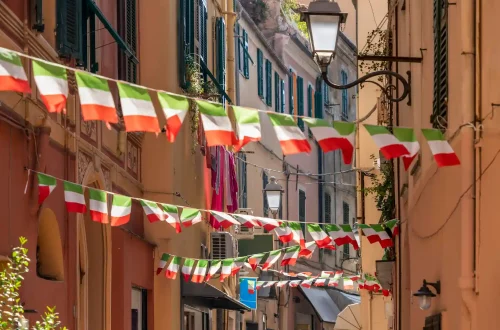Italy is famous for its vibrant and varied cultural heritage, which spans thousands of years and has had a profound impact on the world. Spanning from ancient Rome through the Renaissance and into modern times, Italian culture has greatly shaped art, architecture, cuisine, music, and other fields. For individuals tracing their family lineage, gaining insight into Italian culture can offer significant perspectives on their heritage and identity.
This exploration not only deepens personal connections to one’s ancestors but also enriches appreciation for the traditions and values that have shaped Italian communities over centuries.
Italian family traditions
Family is the cornerstone of Italian culture, with traditions that emphasize unity, love, and shared experiences. One of the most cherished practices is the Sunday family meal, where relatives gather to enjoy a hearty meal and each other’s company. These meals often feature multiple dishes, including antipasti, pasta, main dishes, and desserts, showcasing the culinary prowess and hospitality of Italian families. Religious festivals also play a significant role in family life, with events such as Christmas, Easter, and saints’ days bringing families together to celebrate faith and tradition. These gatherings are marked by special dishes, rituals, and a sense of community that strengthens family bonds.
Take advantage of specialized assistance to secure your passport for a borderless future.
Italian cuisine: going beyond the pasta
While pizza and pasta are perhaps the most internationally recognized Italian dishes, the country’s cuisine is incredibly diverse, reflecting its regional differences.
Each region boasts its own specialties, often based on local ingredients and traditional recipes passed down through generations.
For example, in Sicily, you might find arancini (fried rice balls) and cannoli, while in Tuscany, you might enjoy ribollita (a hearty vegetable soup) and bistecca alla Fiorentina (Florentine steak).
Fresh, seasonal ingredients are paramount in Italian cooking, with an emphasis on quality and simplicity. This commitment to culinary excellence is a source of pride and a key part of Italy’s cultural identity.
Typical festivities and celebrations
Festivities and celebrations are integral to Italian culture, providing opportunities for communities to come together and celebrate their shared heritage. Carnevale, one of the most famous festivals, is celebrated with elaborate masks, costumes, and parades, particularly in Venice. Another significant celebration is Ferragosto, held on August 15th, which marks the Assumption of Mary and the height of the summer vacation season. Families often gather for picnics, beach outings, and fireworks. These festivals are not only joyous occasions but also serve as reminders of the deep-rooted traditions that connect individuals to their cultural history.
Architecture and art: influences on daily family life
Italy’s architectural and artistic heritage is unparalleled, with a legacy that continues to influence contemporary life. Renaissance architecture, characterized by symmetry, proportion, and the use of classical elements, is evident in many traditional Italian homes and public buildings. This architectural style reflects a commitment to beauty and harmony, values that are deeply ingrained in Italian culture. The impact of classical art is also significant, with masterpieces by artists such as Leonardo da Vinci, Michelangelo, and Raphael serving as symbols of Italy’s rich artistic legacy. These artistic influences are often passed down through generations, shaping cultural values and personal identities.
Take advantage of specialized assistance to secure your passport for a borderless future.
Italian music: from opera to popular songs
Italy’s musical tradition is as diverse and influential as its other cultural aspects. The country is renowned for its operatic heritage, with composers like Verdi and Puccini creating works that are celebrated worldwide. Opera has played a significant role in Italian culture, often performed at grand theaters and enjoyed by audiences of all ages. In addition to opera, Italy boasts a rich tradition of folk and popular music. Canzoni popolari (popular songs) often reflect regional identities and can provide clues about one’s ancestral origins. From the romantic ballads of Naples to the lively tarantellas of Sicily, Italian music is a vibrant expression of cultural identity.
Cultural indicators of Italian descent
Several subtle signs can indicate possible Italian ancestry, often embedded in daily life. Typical Italian names, such as Rossi, Bianchi, or Esposito, are strong indicators of Italian roots.
The 10 most common Italian surnames
Culinary habits, such as a preference for Mediterranean diet staples like olive oil, garlic, and fresh herbs, can also hint at Italian heritage. Additionally, family traditions like large gatherings for meals and a strong emphasis on family unity are characteristic of Italian culture. Recognizing these cultural indicators can inspire individuals to delve deeper into their family history and uncover more about their Italian ancestry.
Final considerations on cultural heritage
Rediscovering one’s Italian cultural roots is a deeply enriching experience, offering a sense of connection to a history and tradition that spans millennia.
By embracing the unique traditions of Italian culture—be it through cuisine, family practices, music, or art—individuals can gain a greater appreciation for their heritage and the values that have been passed down through generations.
This journey of exploration and discovery not only honors the past but also enriches the present and future, fostering a stronger sense of identity and belonging.
For those interested in exploring their Italian heritage further, considering specialized services can be a valuable step.
Professional genealogical services, Services like those provided by io.citizen offer thorough guidance and support in uncovering family histories and navigating the complexities of Italian citizenship applications. With expert assistance, individuals can gain deeper insights into their ancestry and celebrate their Italian heritage with confidence and pride.
Take advantage of specialized assistance to secure your passport for a borderless future.






